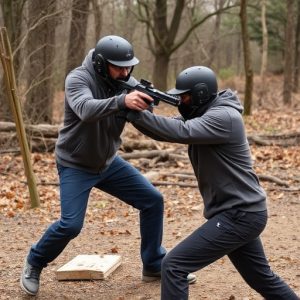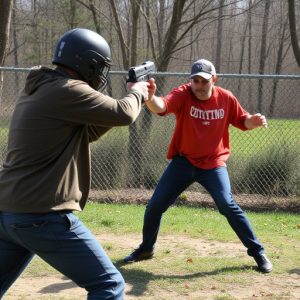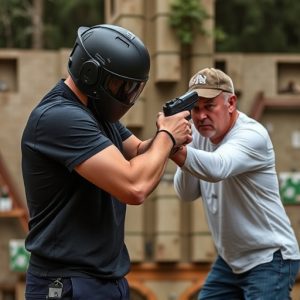Compact Stun Guns with Flashlight: A Self-Defense Tool Overview
Compact stun guns with integrated flashlights are popular self-defense tools that use projectile tec…….
Compact stun guns with integrated flashlights are popular self-defense tools that use projectile technology, firing heavy objects at high speed to incapacitate targets. They offer versatility and enhanced visibility but have a shorter range than contact weapons like Tasers, which use electrical current for longer-range incapacitation. Both methods have benefits and drawbacks, requiring users to consider factors like desired range, safety, and specific application needs when choosing between them. Understanding local regulations is crucial as compact stun guns may face varying restrictions across jurisdictions.
“In the realm of self-defense, understanding the nuances between projectile and contact stun weapons is paramount. This comprehensive guide delves into the heart of these tools, exploring their distinct mechanisms, from the range of compact stun guns with flashlights to the intricate workings that set them apart.
Weighing the pros and cons, we navigate the legal landscape surrounding personal use, ensuring you’re armed with knowledge in today’s digital era. Discover how these devices offer unique advantages, catering to diverse needs for individuals seeking effective self-defense solutions.”
- Understanding Projectile and Contact Stun Weapons: A Comprehensive Overview
- Compact Stun Guns with Flashlight: The Modern Self-Defense Tool
- How Do They Work? Unraveling the Mechanisms Behind Each Type
- Pros and Cons: Weighing the Advantages and Disadvantages
- Legal Considerations: Navigating Regulations for Personal Use
Understanding Projectile and Contact Stun Weapons: A Comprehensive Overview
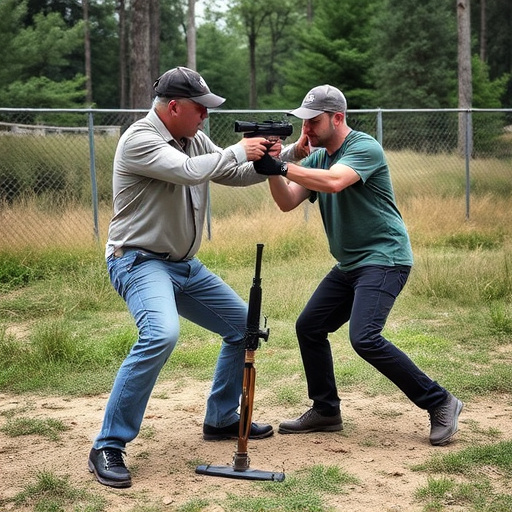
Stun weapons are designed to temporarily incapacitate a target, rendering them non-threatening for a period of time. They primarily function through two methods: projectile and contact. Projectile stun weapons, such as compact stun guns with integrated flashlights, launch a small, heavy object towards the target at high speed. This impact delivers a powerful stun effect without requiring direct physical contact between weapon and target. On the other hand, contact stun weapons, like Tasers or electroshock devices, use electrical current to disrupt muscular control in the target’s body, causing temporary paralysis.
The choice between projectile and contact stun weapons depends on various factors, including desired range, safety considerations, and specific application needs. Compact stun guns with flashlights offer a versatile option, combining close-range incapacitation through impact with enhanced visibility provided by the flashlight. Contact stun devices, meanwhile, are effective at longer ranges but raise concerns about potential collateral damage and bystander harm if not used responsibly. Understanding these differences is crucial for selecting the most suitable stun weapon for self-defense, law enforcement, or other tactical situations.
Compact Stun Guns with Flashlight: The Modern Self-Defense Tool
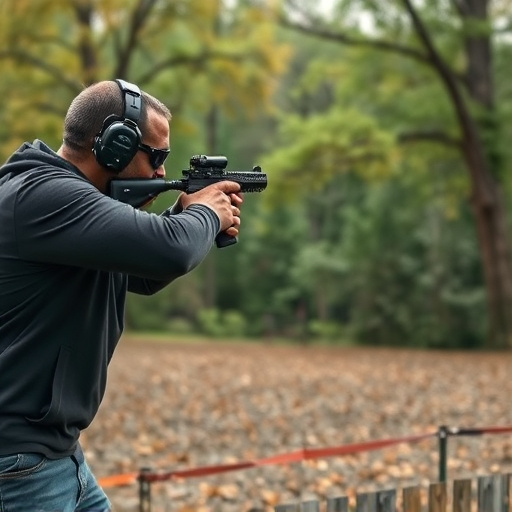
Compact stun guns with integrated flashlights have emerged as a modern self-defense tool, appealing to individuals seeking effective yet discreet personal safety solutions. These innovative devices combine the power of a stun gun with the versatility of a flashlight, making them ideal for various situations. The compact design allows users to easily carry them in pockets or purses, ensuring they’re always at the ready.
The integration of a flashlight not only enhances visibility in dark or low-light conditions but also serves as a psychological deterrent. With a simple flip or press of a button, users can deploy both tools simultaneously, providing a strong defense against potential threats. This dual functionality offers peace of mind and empowers individuals to take control of their safety with ease.
How Do They Work? Unraveling the Mechanisms Behind Each Type
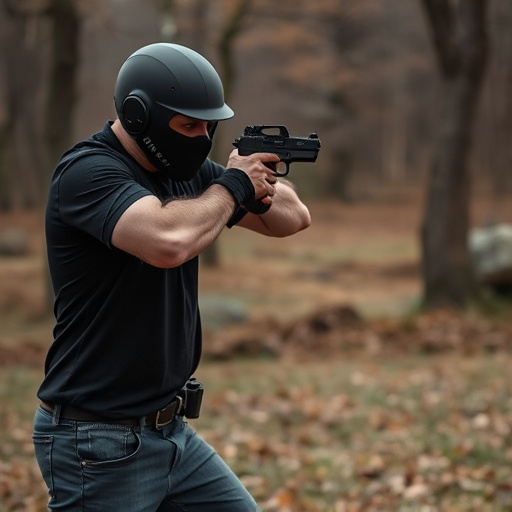
Projectile and contact stun weapons operate on different principles, offering distinct approaches to incapacitating an opponent. Compact stun guns with flashlight exemplify projectile technology, firing non-lethal projectiles like rubber bullets or bean bags at high velocity. These devices rely on kinetic energy transfer, causing pain, disorientation, and temporary muscle paralysis upon impact. The force of the projectile disrupts balance and coordination, making it an effective crowd control measure for law enforcement and self-defense scenarios.
In contrast, contact stun weapons, such as electric stun guns or tasers, utilize electrical current to disrupt muscular control. They fire two probes connected to a high-voltage, low-amperage electrical charge, temporarily paralyzing muscles in the target area upon direct contact. This method ensures non-lethal incapacitation while allowing the user to maintain a safe distance from the assailant. Understanding these mechanisms is crucial for evaluating the suitability of each type for specific situations and ensuring their responsible use.
Pros and Cons: Weighing the Advantages and Disadvantages
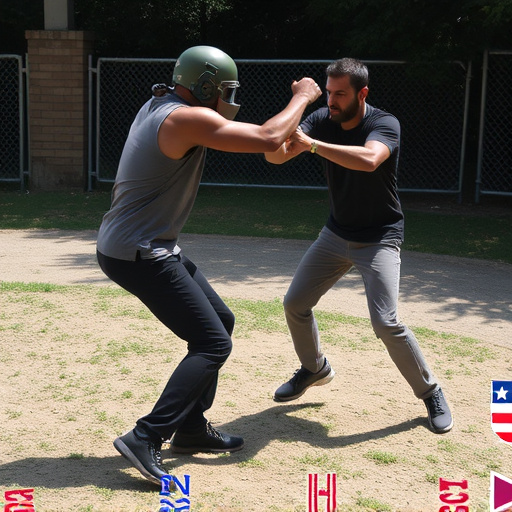
When comparing projectile and contact stun weapons, each type offers unique advantages and disadvantages. One notable option on the market today is the compact stun gun with flashlight, which combines convenience and power in a small package. Pros include ease of use; these devices can be readily available for immediate self-defense, often legal in more areas than traditional stun guns or tasers, and offer a non-lethal solution for deterring potential threats. Their compact size makes them easy to carry, ensuring you’re prepared for any unexpected situation.
However, cons such as limited range and reduced stopping power compared to contact stun weapons must be considered. Projectile stun devices often rely on close proximity to be effective, which can be a drawback in certain scenarios. Additionally, the flashlight feature, while handy, might draw unwanted attention or even give away your position in low-light conditions. Balancing these factors is key when choosing between projectile and contact stun weapons, especially for personal safety considerations.
Legal Considerations: Navigating Regulations for Personal Use
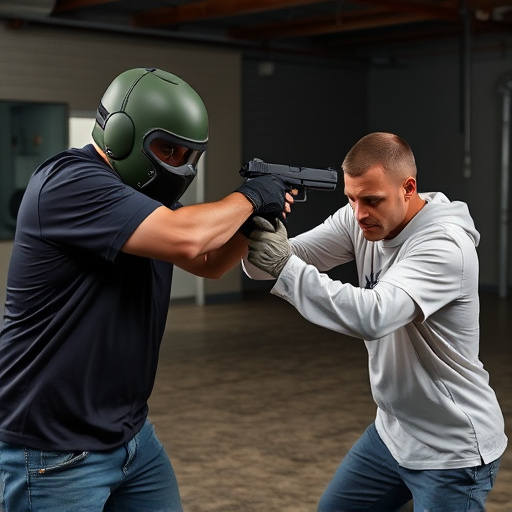
When considering the legal aspects of owning and carrying stun weapons, it’s crucial to understand that regulations vary widely depending on your location. In many regions, compact stun guns with integrated flashlights are treated differently from traditional firearms or bladed weapons. This can offer individuals a more accessible option for personal protection without the extensive licensing requirements often associated with other types of self-defense tools.
However, navigating these regulations is essential to ensure compliance and avoid legal repercussions. Some areas have strict limitations on stun guns’ power output, allowing only low-voltage devices. Others may require registration or permits, especially if you plan to carry your stun gun openly. It’s vital to research and understand the specific laws in your jurisdiction to make informed decisions about acquiring and using a compact stun gun with flashlight for personal safety.
In conclusion, both projectile and contact stun weapons offer unique solutions for self-defense, each with its own merits. While compact stun guns with flashlights provide a modern, versatile option for personal safety, understanding their mechanisms and legal considerations is paramount. By weighing the pros and cons of each type, individuals can make informed decisions to choose the best tool for their needs, ensuring they are prepared and protected in various situations.
